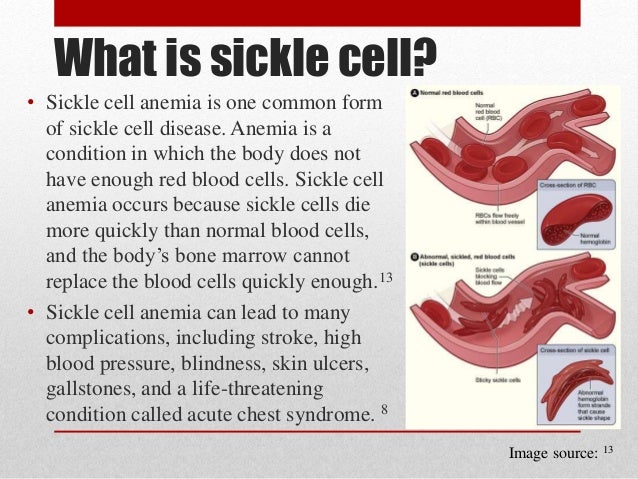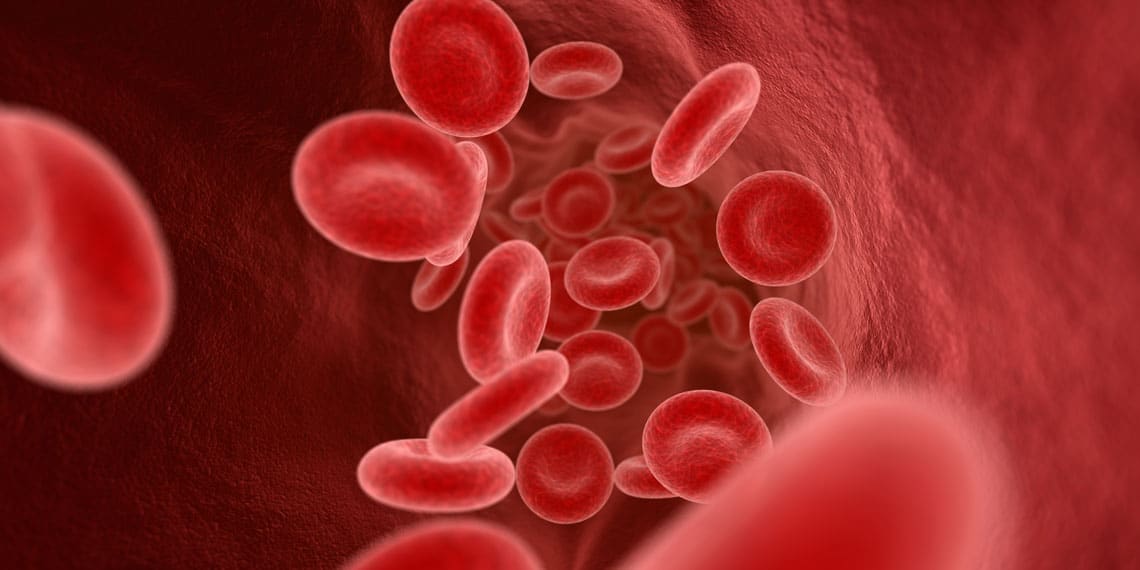Some people may be admitted to the hospital for intense treatment. Symptoms of sickle cell anemia include bacterial infections, arthritis, leg ulcers, fatigue, and lung and heart injury.

what causes sickle cell anemia DriverLayer Search Engine
Treatment of sickle cell anemia.
How can sickle cell anemia be treated. The treatment of sickle cell anaemia is a developing area of medicine. Sickle cell patients frequently get severe debilitating bone pain. The specialist who knows your case can give more accurate information about the outlook for your particular situation.
The most commonly used treatment for sickle cell disease is hydroxyurea. Infants with sickle cell anemia can begin taking antibiotics at about 2 months old and often continue for the first 5 years of life. What is sickle cell anemia & how is it treated?
However, it usually does not address the underlying cause. Sickle cell disease is a genetic disorder caused by mutations in the beta globin gene that leads to faulty hemoglobin protein, called hemoglobin s. (i) no requirement for administration of immunosuppressive drugs to prevent rejection of the unmatched transplanted cells, (ii) the.
Those who suffer from sickle cell disease. No, sickle cell anemia is not contagious, but for precautionary resons, people diagnosed with sickle cell anemia should take penicillin to get better Medical marijuana has arisen as a popular alternative treatment that can be used along with other treatments to help with many of the complications caused by sickle cell anemia.
In children with sickle cell anemia at high risk of stroke, regular blood transfusions can decrease the risk. In this case, the red blood cells will be brittle and prone to rupture. Sickle cell anemia (sickle cell disease) is a blood disease that shortens life expectancy.
Blood transfusions increase the number of normal red blood cells in circulation, helping to relieve anemia. Other signs and symptoms of sickle cell disease include severe anemia, difficulty breathing, chest pain, acute chest syndrome, and poor oxygenation. The sites that are commonly affected by pain are the arms, legs, joints, chest, abdomen, and bones.
Schematic representation of the pathophysiology (in part) of sickle cell anemia. Most pain related to scd can be treated with over the counter pain medications such as ibuprofen and aspirin. Cyanate and thiocyanate should not be used to treat sickle cell anemia.patients with sickle cell disease are treated with hydroxyurea.for younger patients they should be treated with stem cell transplantation and they will be cured.
Sickle cell disease (scd) is a group of blood disorders typically inherited from a person's parents. These sickle cells can block blood flow, and result in. Sickle cell disease (scd) refers to a range of inherited red blood disorders, one of which is sickle cell anemia.
They can get myocardial infarctions or heart attacks or strokes, they can get kidney infarctions, and splenic infarctions. Some people who have severe pain are given opioid (i.e. Scientists are studying new treatments for sickle cell anemia,.
Gene therapy, a technique in which normal genes are implanted in precursor cells (cells that produce blood cells), is being studied. Physicians treat most complications of sickle cell anemia as they take place. Currently, available for it in developed countries, hematopoietic stem cell transplantation (hsct) is the only treatment for scd.
In all types of anemia, blood transfusions can help replace your lost or defective red blood cells and reduce symptoms. The most common type is known as sickle cell anaemia. Morphine) medications daily, along with additional pain medication.
In fact, over 75% of sickle cell patients can be cured with a transplant, and we have already done over 50 cases, he said. No treatment of sickle cell anemia is available. Sickle cell anemia treatment options include medications to reduce pain, and blood transfusions, and mainly a bone marrow transplant to prevent further complications.
Problems in sickle cell disease typically begin around 5 to. Individuals with sickle cell anemia who become severely anemic or will need periodic blood transfusions, which can also help reduce the risk of a stroke. It helps the body keep producing another form of hemoglobin that isn’t affected by sickle cell disease (called fetal hemoglobin).
Despite many approaches that cannot solve sickle cell anemia, increasing oxygenation in the body by ironically utilizing the co2 that is usually expelled with breathing has a fantastic success rate for treatment and complete reversal of this painful, debilitating disease. Sickle cell anemia is characterized by recurrent episodes of pain that vary in intensity i.e can be mild to severe. It can now be used in patients 2 years old and older.
A variety of medications may be used to treat sickle cell anemia. For now, there are only two drugs approved by the fda to treat sickle cell anemia. Your doctor can suggest a.
A single gene mutation (gag→gtg and ctc→cac) results in a defective hemoglobin that when exposed to deoxygenation (depicted in the right half of the diagram) polymerizes (upper right of the diagram), resulting in the formation of sickle cells. Infants need to take liquid penicillin, whereas. It is caused by an inherited abnormal hemoglobin that decreases life expectancy.
Sickle cell anemia (sickle cell) is a disorder of the blood that results from inherited abnormal hemoglobin. These prescribed medications helps in relieving pain during sickle cell crisis. Transfusions can also be used to treat other complications of sickle cell anemia, or they can be given to prevent complications.
Other than a bone marrow transplant, hydroxyurea has been the only treatment available that affects the disease itself. New treatments continue to be developed and the information on outlook above is very general. Sickle cell treatment is focused on managing and preventing the worst.
Some of the medications which are used in sickle cell anemia treatment include:
Some people who have severe pain are given opioid (i.e. The treatment of sickle cell anaemia is a developing area of medicine.

Sickle Cell Anemia and Sickle Cell Disease Types, Symptoms
For now, there are only two drugs approved by the fda to treat sickle cell anemia.

Can sickle cell anemia be treated. Babies and children age 2 and younger with sickle cell anemia should make frequent visits to a doctor. A single gene mutation (gag→gtg and ctc→cac) results in a defective hemoglobin that when exposed to deoxygenation (depicted in the right half of the diagram) polymerizes (upper right of the diagram), resulting in the formation of sickle cells. With the exception of a bone marrow transplant, sickle cell anemia can't be cured, although there are some treatments that can control symptoms and reduce painful crises.
Currently, available for it in developed countries, hematopoietic stem cell transplantation (hsct) is the only treatment for scd. The only cure is a bone marrow or stem cell transplant. Ford al, ragan dk, fellah s, binkley mm, fields me, guilliams kp, et al.
The specialist who knows your case can give more accurate information about the outlook for your particular situation. So just like it took a very long time for us to realize that the world is round and not flat. Pain killers help as well, and antibiotics can treat infections.
Sickle cell disease is a genetic disorder caused by mutations in the beta globin gene that leads to faulty hemoglobin protein, called hemoglobin s. Bone marrow transplant has been used to treat sickle cell anemia. Most pain related to scd can be treated with over the counter pain medications such as ibuprofen and aspirin.
Treatment of sickle cell anemia. Some of the medications which are used in sickle cell anemia treatment include: In fact, over 75% of sickle cell patients can be cured with a transplant, and we have already done over 50 cases, he said.
Morphine) medications daily, along with additional pain medication. Physicians treat most complications of sickle cell anemia as they take place. Gene therapy, a technique in which normal genes are implanted in precursor cells (cells that produce blood cells), is being studied.
These sickle cells can block blood flow, and result in. Children younger than 16 years of age who have severe complications and have a matching donor are the best candidates. Yes no cure and as a result, treatment for sickle cell anemia is usually aimed at avoiding crises, relieving symptoms and preventing complications.
This destroys the stem cells present in the bone marrow, the cells that later go on to become red blood cells (and other types of blood cells). Your doctor can suggest a. A variety of medications may be used to treat sickle cell anemia.
Scientists are studying new treatments for sickle cell anemia, consisting of: New treatments continue to be developed and the information on outlook above is very general. Silent infarcts in sickle cell anemia occur in the borderzone region and are associated with low cerebral blood flow.
Sickle cell anemia treatment options include medications to reduce pain, and blood transfusions, and mainly a bone marrow transplant to prevent further complications. The sites that are commonly affected by pain are the arms, legs, joints, chest, abdomen, and bones. Sickle cell anemia is characterized by recurrent episodes of pain that vary in intensity i.e can be mild to severe.
Those who suffer from sickle cell disease. Individuals with sickle cell anemia who become severely anemic or will need periodic blood transfusions, which can also help reduce the risk of a stroke. Genetic engineering, however, may prove to.
Some people may be admitted to the hospital for intense treatment. Cyanate and thiocyanate should not be used to treat sickle cell anemia.patients with sickle cell disease are treated with hydroxyurea.for younger patients they should be treated with stem cell transplantation and they will be cured. Periodic red blood cell transfusions allay the worst symptoms.
(i) no requirement for administration of immunosuppressive drugs to prevent rejection of the unmatched transplanted cells, (ii) the. The person with sickle cell disease is exposed to chemotherapy. Sickle cell disease (scd) refers to a range of inherited red blood disorders, one of which is sickle cell anemia.
What is sickle cell anemia & how is it treated? These prescribed medications helps in relieving pain during sickle cell crisis. Currently, the only treatment that can cure sickle cell disease is a bone marrow transplant.
Other signs and symptoms of sickle cell disease include severe anemia, difficulty breathing, chest pain, acute chest syndrome, and poor oxygenation. No treatment of sickle cell anemia is available. Countless doctors and official medical sources and websites currently report that the only cure for sickle cell anemia is the (very risky) treatment of bone transplant.
Schematic representation of the pathophysiology (in part) of sickle cell anemia. It can also lead to infection, acute chest syndrome and stroke. Sickle cell patients frequently get severe debilitating bone pain.
They can get myocardial infarctions or heart attacks or strokes, they can get kidney infarctions, and splenic infarctions. Medical marijuana has arisen as a popular alternative treatment that can be used along with other treatments to help with many of the complications caused by sickle cell anemia. It can now be used in patients 2 years old and older.